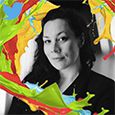
Sketchnotes & visual thinking note-taking apps
“Sketchnotes are a visual form of note-taking that can include drawings, various lettering sizes and styles, color, icons, arrows, boxes and more — whatever works for you.”
Here are three engaging apps from Susan Oxnevad that allow students to integrate sketches, colour-coding, audio files, diagrams and more into their note-taking. Click here to check out these powerful tools for visual thinking and communicating ideas with the iPad. Dr Wedley Fryer also has an excellent page of sketchnote resources.
And a few tips from this site here which has an excellent explaination and examples of note-taking using sketchnotes…
- Draw! First and foremost. Sprinkle your words with rough illustrations and diagrams — you can always expand on your scribbles later. Nothing needs to be perfect. Important: Always carry a small notebook — something with unlined pages or a grid. Or try sketchnoting on your iPad or tablet.
- Edit. No need to capture everything that’s said word for word — just paraphrase the idea in a way that resonates with you. But do use quote marks or some indicator when you write down a direct quote.
- Chunk. Use separators and boxes, avoid too much linearity — edit live, as if you are writing a tweet and are aware of your space limitations.
- Work. By that I mean work on your buffer — get used to listening to one thing while drawing the last thing you heard. It’s difficult at first but keep trying and you’ll be surprised at the mental cache you can develop. It’s just exercise for your brain.
- Rest. If something you’re strenuously trying to capture goes down a rabbit hole or gets boring, don’t feel bad abandoning your note-taking for the moment — you’ll be rested for when things get interesting again.
- Practice. Sketchnote TED talks or radio stories, conversations, meetings, movies, and songs. That way you’ll figure out your own secrets and shortcuts. Also, if you work in a certain field and things, themes, and theories tend to appear over and over again, try to get used to drawing them. For example, a real estate agent should to be able to draw decent houses, trees, furniture, family pets, etc at a moment’s notice. That way you don’t waste valuable sketching time by concepting in your head.
Get brains engaged by understanding the way images, words, feelings and connections are created as we consider big ideas. Tom Wujec delivers a TED Talk that takes us on a journey through the brain…















